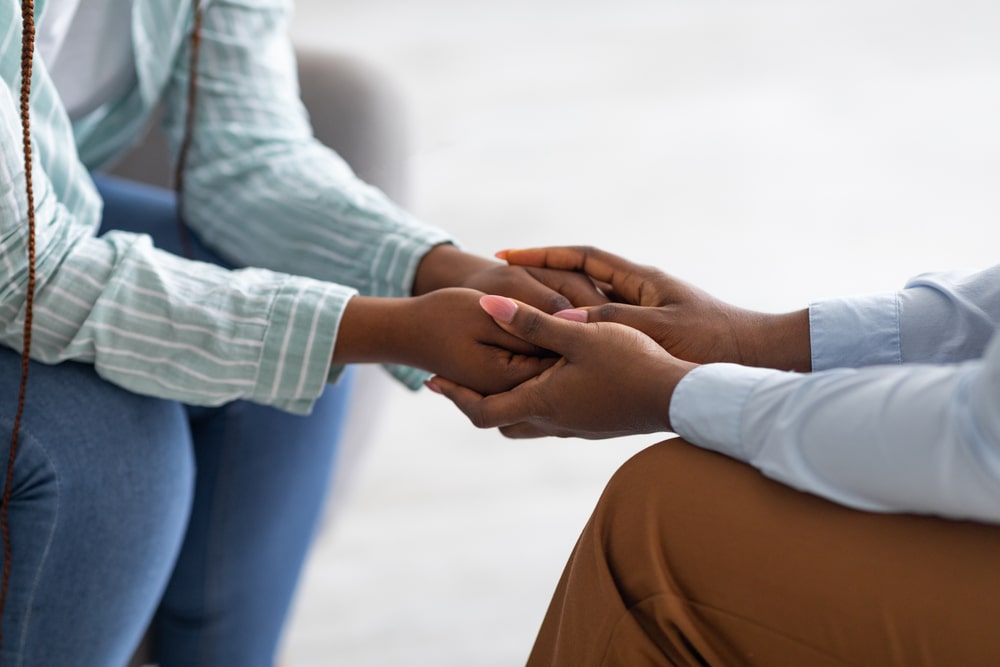
The technological developments of the 21st century have touched every aspect of our lives, including how we deal with loss and grief. The rise of social media, livestreaming, and other new technology has changed how we interact with each other, which has affected the way we navigate our grief journeys.
These advances in technology have the potential to aid us in the grieving process. As you navigate your new normal and work to understand your grief, here are a few ways technology can help.
1. Post Obituaries Online

The days when obituaries were only printed in the newspaper are long gone. Most funeral homes now post obituaries on their websites, which makes it easier for friends and family who aren’t nearby to read the obituary, share condolences in an online guestbook, donate flowers, and more. These online obituaries make it easier to share service information with friends and family and have a place where your loved one’s memory will live on.
2. Announce the Loss
After a loss, it’s important to find a way to communicate the news of the death as efficiently as possible. Of course, those closest to the deceased, like family and close friends, should be told in person, but online obituaries and social media sites allow the information to go out to the deceased’s entire social network of friends. That keeps you from making the painful announcement multiple times to different groups of people. Once you are sure that everyone closest to the deceased has been informed in person or by phone, announce the loss on social media.
3. Receive Social Support

Social media allows you to receive the support of loved ones both near and far. Friends can share caring words, condolences, and memories on social media. You can turn your loved one’s account into a memorial page, which mourners can return to from time to time to express their feelings and remember the impact your loved one had. This online support network can benefit you as you begin your grief journey.
4. Set Up a Memorial Website
You may wish to do more than a Facebook post to honor a loved one. If so, consider making a memorial webpage. Memorial websites allow you to create an online memorial that friends and family can access for years to come. These sites also enable you to write tributes, add photos, and post videos of remembrance, and they give your family and friends an online space to return to periodically for reflection. Just as we return to the gravestone with flowers in hand to spend a few moments remembering, so can we also return to a memorial page to reflect on the life of a loved one.
5. Watch a Service Online

While attending a service in person is always best, watching online is a great option for those who can’t leave home or live far away. Many more funeral homes offer livestreaming, and others may record the service so people can watch it later. If your family is interested in a way for friends and family to watch the funeral online, talk to your funeral director and see what options they have for you.
6. Raise Funds for Services
Need help paying for a service? You can use crowdfunding websites to create a campaign and raise money for a funeral. GoFundMe.com is a very popular way to raise funds for a service, or there are other websites, such as Funeral Fund, that are specifically tailored to funeral fundraising. These sites provide efficient ways to receive the financial support you or a loved one needs to craft a meaningful ceremony.
7. Create a Memorial Video

Memorial videos are a great way to honor the life of a loved one and highlight their unique personality and legacy. You can create a video with photos of your loved one to use in a service or to include on a memorial webpage. Additionally, some funeral homes can make a video for you with images you provide, so check with your local funeral home to see if that’s a service they offer.
8. Add a QR Code to a Headstone
One new option for customizing a headstone is adding a QR code. If you have more you want to add to a headstone but don’t have the room, you can use a QR code to link to an online memorial or obituary. Friends and family members who visit the grave can scan the QR code and see photos, videos, and stories of their loved one. While this option does require you to create a code and a page for it to link to, it can be a great way to make a highly personalized marker to honor your loved one.
9. Use Digital Grief Resources

In our digital age, receiving grief support is easier than ever! Many funeral homes offer digital aftercare services, which provide families with emails or texts to support them on their grief journeys. In addition, online grief therapy options provide a way for the grieving to receive ongoing support from the comfort of their own home. Check with your funeral director to learn more about the options available to you!
As technology continues to change, new resources become available to help people better understand their grief. While in-person contact will always be essential, technology can provide additional support, especially for those who are more isolated. As you begin your grief journey, consider how technology may benefit you and your family. Don’t be afraid to try something new!























































